 W
WDiego Abad de Santillán, born Sinesio Vaudilio García Fernández, was an anarcho-syndicalist activist, economist, author, and a leading figure in the Spanish and Argentine anarchist movements.
 W
WRamón Acín Aquilué was a Spanish anarcho-syndicalist, teacher, painter, sculptor, writer and avant-garde artist who was murdered by fascists in the first year of the Spanish Civil War.
 W
WFelipe Alaiz de Pablo, born on 23 May 1887 at Belver de Cinca and died on 8 April 1959 in Paris. He was a Spanish writer, translator, and journalist of the libertarian movement. He is considered to be the first openly anarchist Spanish writer.
 W
WFrancisco Ascaso Abadía was the cousin of Joaquín Ascaso, the President of the Regional Defence Council of Aragon, a carpenter and a prominent Anarcho-syndicalist figure in Spain.
 W
WEduardo Barriobero y Herrán was a lawyer and activist in the Confederación Nacional del Trabajo.
 W
WSara Berenguer Laosa was a Spanish Catalan militant anarcho-syndicalist, anarcha-feminist, and writer active in the Mujeres Libres movement.
 W
WMaría Bruguera Pérez was an anarcho-syndicalist who died in Madrid in 1992.
 W
WRamon Vila Capdevila, sometimes known by various nicknames, including Caracremada, was a Catalan anarchist, member of the Confederación Nacional del Trabajo, and guerrilla fighter.
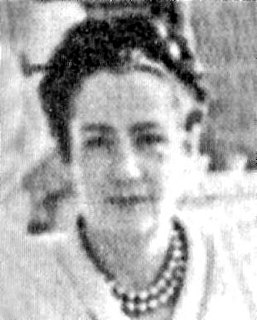 W
WMercedes Comaposada Guillén was a Spanish pedagogue, lawyer, and anarcho-feminist. With Lucía Sánchez Saornil and Amparo Poch y Gascón, she was the cofounder of the libertarian women's organization, Mujeres Libres. She participated in the Spanish Revolution of 1936. Apart from the numerous articles she wrote for the press, Comaposada published several works, some of them under the name of Mercedes Guillén, a name that had some notability in libertarian circles.
 W
WJosé Buenaventura Durruti Dumange was a Spanish insurrectionary, anarcho-syndicalist militant involved with the CNT, FAI and other anarchist organisations during the period leading up to and including the Spanish Civil War. Durruti played an influential role during the Spanish Revolution and is remembered as a hero in the anarchist movement.
 W
WAntònia Fontanillas Borràs was a Spanish Catalan seamstress, anarcho-syndicalist, trade unionist, and militant anarchist from Palafrugell. She was a leader within various organizations including Libertarian Youth of Palafrugell, Solidaritat Internacional Antifeixista (SIA), and Confederación Nacional del Trabajo (CNT). With her mother, she fled Catalonia in 1939, setting in Toulouse. She returned to Spain on several occasions, bringing propaganda, weapons, or money. Fontanillas died in Dreux in 2014.
 W
WJoan Garcia i Oliver (1901–1980) was a Catalan anarcho-syndicalist revolutionary and Minister of Justice of the Second Spanish Republic. He was a leading figure of anarchism in Spain.
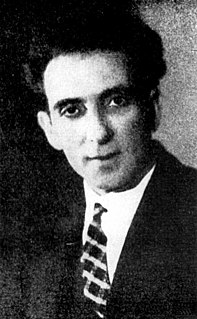 W
WJosé María Estivalis Calvo (1886–1939), better known as Armand Guerra, was a Spanish director and anarchist. With the film cooperative Le cinéma du peuple, Guerra directed the 1913 short Les miséres de l'aiguille featuring Musidora and the first segment of the 1914 Lucien Descaves's La commune. Guerra lived in Russia during the October Revolution and Germany during the Weimar Republic, where he was a producer, screenwriter, and writer of Spanish subtitles. His feature film debut was the 1926 Luis Candelas o el bandido de Madrid. He started a production company in Berlin, which released Der Kampf un der Mann in 1927. He moved to Spain and was unsuccessful in starting a film production studio. In conjunction with the Confederación Nacional del Trabajo, he began to film Carne de fieras in July 1936 but was interrupted by the Spanish Civil War. The film was later finished in 1992. During the war, he produced several documentaries. As communists came to dominate the anarchists in Spain, he moved his wife and daughter to France, where he worked on solidarity campaigns for the Spanish Republicans. Upon returning to Spain, Guerra was captured. Though he escaped to Paris in February 1939, he soon died thereafter.
 W
WLola (Dolores) Iturbe was a prominent Spanish anarcho-syndicalist, trade unionist, activist, and journalist during the Second Spanish Republic, and a member of the French Resistance during the Battle of France. She co-founded the anarcho-feminist movement, Mujeres Libres, and of the Comité de Milicias Antifascistas during the Spanish Civil War.
 W
WJosep Lluis Facerias (1920–1957) was a Spanish insurrectionary anarchist. He was born in Barcelona, Catalonia, Spain, on 6 January 1920. He was nicknamed 'Face'. When the military revolt took place in July 1936, Facerias was already affiliated to the National Confederation of Labour (CNT) and to the Libertarian Youth. He fought on the Aragon front throughout the war in the Ascaso column and in other units. In the last battles in Catalonia he was taken prisoner and Facerias was in various concentration camps and work gangs. When he was released at the end of 1945 he joined, in Barcelona, the industrial network of the Graphic Arts of the clandestine CNT although in fact he was working as a waiter.
 W
WJuan López Sanchez was a Spanish construction worker, anarchist and member of the Confederación Nacional del Trabajo, and one of the founders of the Federación Sindicalista Libertaria. During the Spanish Civil War (1936–1939) he was Minister of Commerce under Francisco Largo Caballero. After the war he spent several years in exile before returning to Spain where he lived without persecution and participated in the "vertical" trade union movement authorized by the dictatorship of General Francisco Franco.
 W
WAnselmo Lorenzo Asperilla was a defining figure in the early Spanish Anarchist movement, earning the often quoted sobriquet "the grandfather of Spanish anarchism," in the words of Murray Bookchin: "his contribution to the spread of Anarchist ideas in Barcelona and Andalusia over the decades was enormous".
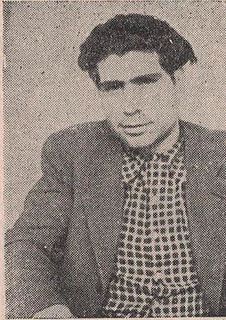 W
WMarià Rodríguez i Vázquez was a Catalan anarcho-syndicalist leader, popularly known as Marianet.
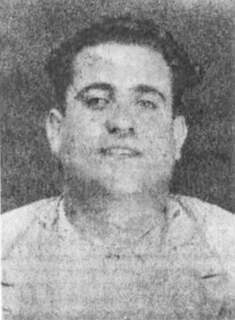 W
WFrancisco Maroto del Ojo was an Andalusian anarchist who was a prominent member of the National Confederation of Labor.
 W
WCipriano Mera Sanz was a Spanish military and political figure during the Second Spanish Republic.
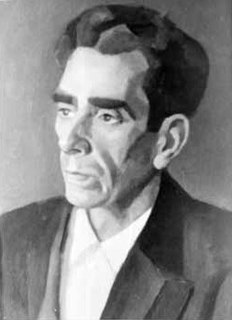 W
WKoldo Mitxelena Elissalt was an eminent Basque linguist. He taught in the Department of Philology at the University of the Basque Country, and was a member of the Royal Academy of the Basque Language.
 W
WJuan Manuel Molina Mateo, also known as Juanel, was a Spanish anarcho-syndicalist militant of the National Confederation of Labor and a founding member of the Iberian Anarchist Federation.
 W
WFederica Montseny Mañé was a Spanish anarchist and intellectual who served as Minister of Health and Social Policy of the Government of the Second Spanish Republic during the Civil War.
 W
WJosé Peirats Valls was a Spanish anarchist, activist, journalist and historian.
 W
WJoan Peiró i Belis was a Catalan anarchist activist, writer, editor of the anarchist newspaper Solidaridad Obrera, two-time Secretary General of the Confederación Nacional del Trabajo and Minister of Industry of the Spanish government during the Spanish Civil War.
 W
WJosé Pellicer Gandía was a Spanish anarchist, politician and revolutionary primarily known for being the founder of the Iron Column during the Spanish Civil War. He is often nicknamed the "Durruti valencià".
 W
WÁngel Pestaña Nuñez was a Spanish Anarcho-syndicalist and later Syndicalist leader.
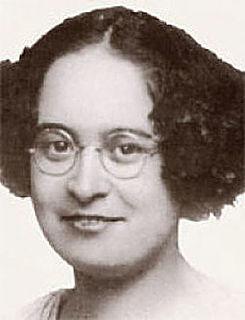 W
WAmparo Poch y Gascón was a Spanish anarchist, pacifist, doctor, and activist in the years leading up to and during the Spanish Civil War. Poch y Gascón was born in Zaragoza.
 W
WIsaac Puente Amestoy, born in Las Carreras near Biscay, was a Basque physician and Spanish anarchist of a strong anarchist communist bent, who adhered to concerns around birth control, hygiene and sexuality. He promoted anarcho-naturism, and was active in the Confederación Nacional del Trabajo (CNT).
 W
WMelchor Rodríguez García was a Spanish politician, a notable anarcho-syndicalist, and the head of prison authorities in Madrid during the Spanish Civil War. He was the last Mayor of Madrid before the Francoist forces took over the city.
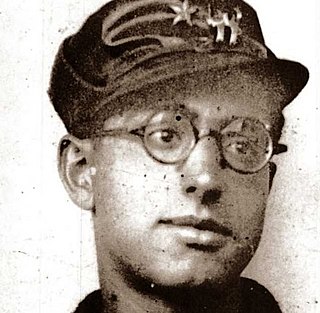 W
WRamón Rufat Llop (1916–1993) was a Spanish anarcho-syndicalist, agent of the Republican secret services, and anti-Franco fighter.
 W
WPau Sabater i Lliró was a Spanish anarcho-syndicalist in the Confederación Nacional del Trabajo in Catalonia. He was known also as "el Tero". He was secretary of the Union of Dyers, one of the most powerful trade unions of the textile industry. His partner was Josepa Ros, with whom he had three children. He was killed by members of the gang of Manuel Bravo Portillo. The murder of Manuel Bravo Portillo himself a few weeks later was interpreted as a revenge from unionists. His funeral on 24 July 1919 was a huge demonstration of workers, with numerous riots across the entire Barcelona from the hospital to the cemetery at Montjuich. The trial for his murder, full of irregularities, took place on 10 and 11 May 1922; the only defendant, Luis Garcia Fernandez, was acquitted.
 W
WRicardo Sanz García (1898–1986) was a leader of the Confederación Nacional del Trabajo (CNT) during the Spanish Civil War. He led the Durruti Column following the death of its namesake.
 W
WSalvador Seguí Rubinat, known as El noi del sucre for his habit of eating the sugar cubes served him with his coffee, was a Catalan anarcho-syndicalist in the Confederación Nacional del Trabajo (CNT), a Spanish confederation of anarcho-syndicalist labor unions active in Catalonia. Together with Ángel Pestaña, Seguí opposed the paramilitary actions advocated and carried out by other members of the CNT. On 10 March 1923, while completing preparations to promote the idea of emancipation as a form of social empowerment among workers, he was assassinated by gunshot on Carrer de la Cadena, in Barcelona's Raval District, at the hands of gunmen working for the Catalan employers' organisation under protection of Catalonia's Civil Governor, Martínez Anido. At this same shooting, another anarcho-syndicalist, Francesc Comes, known as Perones, was wounded and was to die several days later.